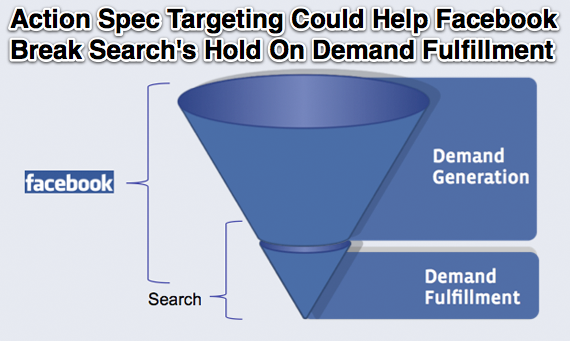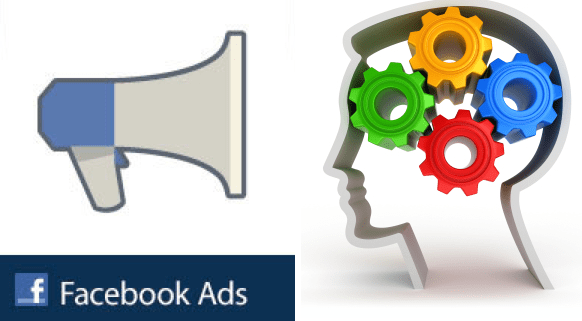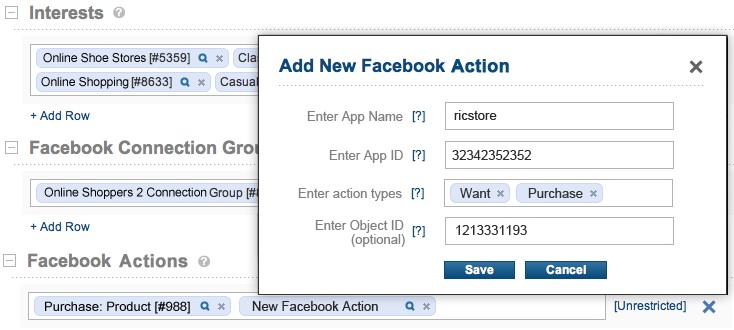Facebook has an answer to those wondering how it will justify its IPO price and keep revenues growing as it saturates key markets: a new behavioral ad targeting system. Facebook has been quietly rolling out the beta of “Open Graph action spec targeting” which allows advertisers to target users by what they listen to, where they travel, what they buy, and other in-app activity.
These behaviors can more accurately denote conversion potential than a user’s biography or interests, That means Open Graph action spec ad targeting could turn finding a needle in a haystack into shooting fish in a barrel. The targeting options could improve the ROI of Facebook ads, and thereby attract a new class of advertisers, get existing ones to spend more, and pull in dollars from search, display, and offline channels.
Since Facebook has already exhausted much of the supply of highly monetizable first world users, it will need to make more money per user to grow revenue. Higher click through and conversion rates of action spec targeted ads will allow Facebook to charge advertisers more per click and waste fewer impressions to get those clicks. It’s also expanding ad inventory by complementing its ad sidebars with Sponsored Story ads in the web news feed, and it will likely monetize its mobile user base in the same way. By serving more ads at a higher cost per click, ad revenue will grow with time.
Until the launch of action spec targeting, advertisers looking to target those with purchase intent often went to search or ad networks employing cookie retargeting that scraped a user’s browsing history. Facebook only offered biographic, social, and interest targeting. These are effective for institutional brand advertising and demand generation, but aren’t as useful for reaching users in the purchase funnel. Direct response performance advertisers sometimes had to buy large volumes of clicks to drive one conversion.

Open Graph action spec targeting will help these Facebook advertisers reach users who’ve stated they’ve already made a related purchase, or plan to. This could help it break out of the demand generation stage of the purchase funnel and into the more lucrative demand fulfillment stage where Google search ads currently reign. Some Facebook advertising experts tell me action spec targeting could double ad conversion rates.
At f8, Facebook announced that advertisers using the Facebook Ads API for buying large campaigns could layer existing targeting parameters targeting users who’ve taken any of the 3 official launch actions: ‘listened’, ‘read’, and ‘watched’ through apps like Spotify, The Washington Post Social Reader, and Hulu. For example, ads could be targeted to anyone who ‘listened’ to ‘Lady Gaga’ or ‘The Rolling Stones’ on Spotify. This was useful for advertisers from these verticals, such a record labels, concert promoters, book publishers, and television networks.
Now that 60 new partnered apps have launched and Facebook has begun approving non-partnered apps and their actions, a much wider range of advertisers will be able to make use of behavioral targeting. Airlines could target those who said they “wishlisted” Barcelona via Gogobot, a fashion retailer could target those who “bought” a specific purse via Payvment, and restaurants could target anyone who “wanted” a burger at a competitor’s restaurant via Foodspotting.
Advertisers with their own Open Graph apps have the most to gain. For example, Groupon already runs huge Facebook ad campaigns, but now has an app through which users can take the action of “buying” deals. Groupon could now retarget ads at any user who has already bought a deal through its app. That audience of previous buyers likely has a much higher conversion rate than its Facebook Page fans or any biographical demographic.
Open Graph action targeting is still in beta so the technical side is bit tricky. There’s no browsable database of Open Graph apps, actions, and objects to target, so advertisers need to find their Open Graph ID numbers by clicking on them in an existing activity story. Third-party developers of Facebook Ads API platforms and services like Nanigans, TBG Digital, and AdParlor are trying to make it easier by creating pre-defined audience segments that advertisers can target.
It will take a few years for behavioral targeting to start boosting revenues. More Open Graph apps need to launch and gain traction so there’s something to target, Ads API platforms need to adapt, and the benefits of behavioral targeting will need to be proven before ad spend starts to shift towards the system. Some users might not be thrilled about being targeted by their app activity. However, they opt into using these apps, and might as well see relevant ads if they’re going to see them anyway.
In the end Facebook, advertisers, and users will all win. Facebook will boost revenues, advertisers will be able to better reach their customers, and users will see more relevant ads based on activity in apps they voluntarily installed, rather than cookies dropped on them without permission.
[Image Credit: Cognitive Behavioral Therapy, Acquisio]

